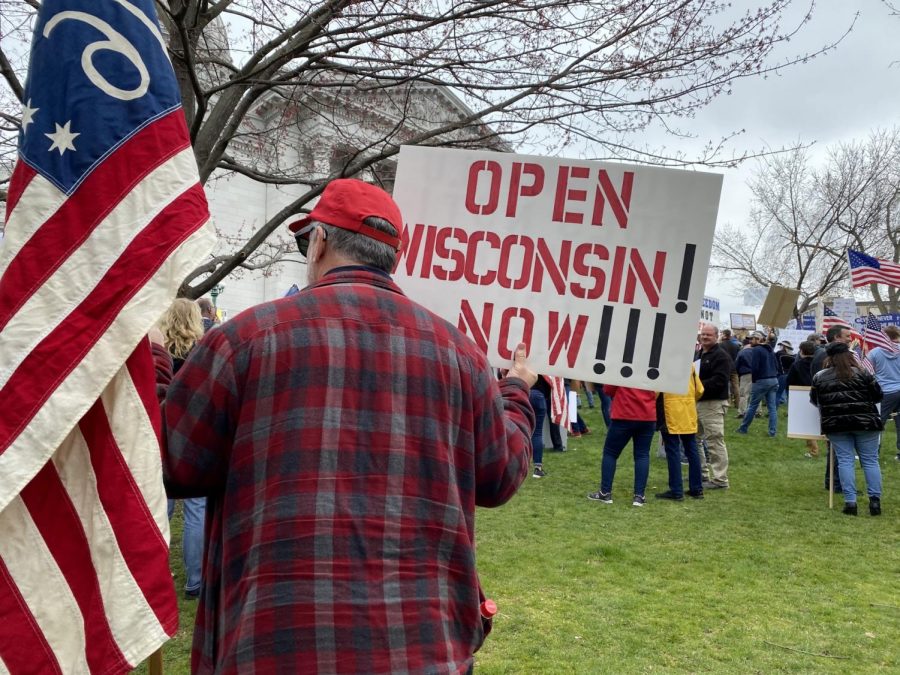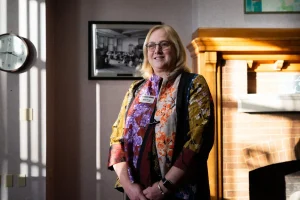UWL students react to the extension of the Safer at Home order
May 9, 2020
On March 25, Gov. Tony Evers issued Emergency #12 Safer at Home Order to contain the spread of COVID-19. The original issuing ceased non-essential travel, businesses, and social interactions which including the closing of schools and libraries, salons and spas, and public places of amusement. This order also included the shut-down of dine-in bars and restaurants and established social distancing guidelines.
On April 16, Emergency Order #28 was issued that went into effect on April 24, extending the original Safer at Home order to May 26, 2020.
Wisconsin was expected to have between 440 and 1,500 deaths from COVID-19 by April 8. However, since the Emergency #12 Safer at Home Order was issued, there was a decrease in exponential growth and only 99 deaths were reported in Wisconsin by April 8. As of May 9 there has been over 10,000 confirmed cases and 399 deaths in Wisconsin. By relaxing the order before containment strategies are in place, Wisconsin would see a surge of cases.
On April 27, Emergency Order #34 was issued which began allowing some non-essential businesses to begin starting up again such as public libraries and golf courses. The extension of the Safer at Home order has caused debate amongst Wisconsin residents leading to protests including “Rally to Reopen Wisconsin” that brought 1,500 protestors to the Wisconsin Capitol on April 24.
The Racquet Press reached out to students from the University of Wisconsin-La Crosse to discuss their opinions on the extension of the Safer at Home order. UWL senior Devin Pettys said he felt conflicted after the extension, but trusts health experts.
“I really believe in what the experts like WHO [World Health Organization] and the CDC [Center for Disease Control], have to say,” said Pettys. “Just because we are seeing infections go down doesn’t mean we should stop now.”
Pettys said while this is not an ideal situation for anyone, he believes the choice for the extension was an educated decision and is for the best, reducing the chances of a bigger crisis. He disagrees with the choices being made to directly ignore the guidelines and gather in large groups to protest.
“I think when people in power are making decisions based on findings of health experts, it is ridiculous to do the exact opposite of what is being asked of you,” said Pettys. “I think that people’s lives and health, in general, are more important than the monetary strain right now.”
Erin Sime, a freshman transferring from UW-Green Bay to UWL, was disappointed by the extension of the Safer at Home Order. “I thought it [the extension] was odd,” she said. “It felt a bit extreme.”
Due to the continued closings of businesses, Sime is now struggling to find work and needs a source of income as she begins paying rent next month. “I applied for a job at Mayo Clinic, but they have put all the applications on hold until most of the precautions have been lifted, so I can’t get a job,” she said.
Sime feels like Wisconsin should begin allowing people to start to go back into restaurants, hair salons, and normal everyday businesses so people can begin to get a sense of normalcy back.
“Just like any other illness, there are extreme and mild cases,” said Sime. “Given that not every case is extreme, a lot of people can take responsibility to self-quarantine. If we are healthy, why should we be forced to stay home?” Although she found the extension to be disappointing, she said she is still following the rules and respecting the set guidelines.
UWL sophomore Gretchen Hoppe said she wasn’t surprised the Safer at Home Order was extended and expected it to happen because she assumed some would not follow all of the rules. “I honestly thought that we could’ve seen it coming since it is such a big problem right now,” she said. “It made sense to me that we wanted to keep the distance a little longer.”
She doesn’t believe the state is ready for large group gatherings or to completely reopen just yet, but when the time comes it should be a gradual transition and explained that if people follow the guidelines she thinks things could begin to open again, but opening everything up at once is not a good idea, but rather, a slow shift must be initiated.
Hoppe has become frustrated after her and her friends have followed the rules and guidelines, but are witnessing others ignore them. “I think it is really important people follow these guidelines,” she said. “It is really frustrating because the ones who aren’t following the rules are extending it for everyone else.”
Looking ahead, Wisconsin has adopted Emergency Order #31, Badger Bounce Back plan to re-open the economy and society in a set of three phases. The phases of this plan will begin after the Safer at Home Order, with each phase becoming less restrictive. In order to move between phases, the Department of Health Services must assess the most up to date data confirming certain criteria have been met.
To learn more about the extension of the Emergency Safer at Home Order, visit https://evers.wi.gov/Documents/COVID19/English_SaferatHomeFAQ.pdf. To learn more about the Badger Bounce Back plan visit, https://evers.wi.gov/Documents/COVID19/EMO31-BadgerBounceBack.pdf.






